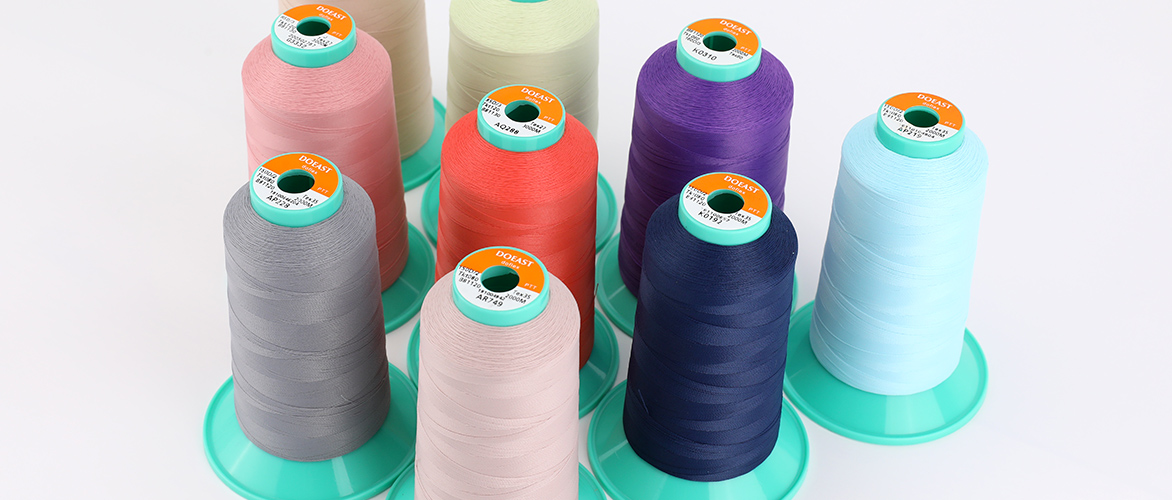What is nylon?
The English name Polyamide (PA for short), its basic composition is an aliphatic polyamide connected by an amide bond—[NHCO]—.
The English name Polyamide (PA for short), its basic composition is an aliphatic polyamide connected by an amide bond—[NHCO]—.
Nylon is a term for polyamide fiber (nylon), which can be made into long fiber or short fiber. Nylon is the trade name of polyamide fiber, also known as Nylon.
What is viscose yarn?
The raw material of viscose yarn (spun rayon) is viscose staple fiber. Viscose staple fiber is one of the first chemical fibers put into industrial production.
The raw material of viscose yarn (spun rayon) is viscose staple fiber. Viscose staple fiber is one of the first chemical fibers put into industrial production.
Viscose yarn and nylon yarn are both yarns, but their uses and characteristics are quite different. However, these two kinds of yarns are extremely widely used.

Advantages of nylon yarn:
In terms of strength and wear resistance, nylon yarn is the best one, with low density, light fabric, good elasticity, fatigue resistance, good chemical stability, and alkali and acid resistance.
In terms of strength and wear resistance, nylon yarn is the best one, with low density, light fabric, good elasticity, fatigue resistance, good chemical stability, and alkali and acid resistance.
Disadvantages of nylon yarn:
The sun resistance is not good, that is, it is easy to turn yellow when exposed to strong sunlight, and the strength is reduced, the moisture absorption performance is reduced, and the moisture absorption is not good. However, compared to acrylic fiber, polyester is much better.
The sun resistance is not good, that is, it is easy to turn yellow when exposed to strong sunlight, and the strength is reduced, the moisture absorption performance is reduced, and the moisture absorption is not good. However, compared to acrylic fiber, polyester is much better.
The use of nylon yarn:
Filament is mostly used in knitting and silk industry. Staple fiber is mostly blended with wool or wool-type chemical fiber to make gabardine, vanidin, etc.
Filament is mostly used in knitting and silk industry. Staple fiber is mostly blended with wool or wool-type chemical fiber to make gabardine, vanidin, etc.
In the industrial field, it can be used to make cords, fishing nets, carpets, ropes, conveyor belts, screens, etc.
Advantages of viscose yarn:
The outstanding advantage of viscose yarn is moisture absorption and easy dyeing. Among ordinary chemical fibers, its moisture absorption and dyeability are very good, and the wearing comfort is very high, so it is often used in the processing of various clothes.
The outstanding advantage of viscose yarn is moisture absorption and easy dyeing. Among ordinary chemical fibers, its moisture absorption and dyeability are very good, and the wearing comfort is very high, so it is often used in the processing of various clothes.
Disadvantages of viscose yarn:
Viscose has poor elasticity, wet strength, and poor abrasion resistance. Therefore, viscose is not washable, has poor dimensional stability, has a relatively large specific gravity, and fabrics are heavier, and resistant to alkalis and acids.
Viscose has poor elasticity, wet strength, and poor abrasion resistance. Therefore, viscose is not washable, has poor dimensional stability, has a relatively large specific gravity, and fabrics are heavier, and resistant to alkalis and acids.
The use of viscose yarn:
Viscose yarn is used in almost all types of textiles, such as filaments for lining, beautiful silk, flags, streamers, tire cords, and so on. Short fiber can be used for imitating cotton, wool, blending, interweaving and so on.
Viscose yarn is used in almost all types of textiles, such as filaments for lining, beautiful silk, flags, streamers, tire cords, and so on. Short fiber can be used for imitating cotton, wool, blending, interweaving and so on.
Through the comparison of the characteristics of the above-mentioned viscose yarn and nylon, it can be known that the two are very different, the uses are also very different, and they play different roles in different fields.
Because of its good moisture absorption, comfortable wearing and excellent spinnability, it is often blended or interwoven with cotton, wool or various synthetic fibers, and used in various clothing and decorative textiles.
The viscose fiber is spun into viscose yarn through a series of spinning processes such as opening and cleaning, carding, drawing, roving, spun yarn, and winding. The viscose yarn feels good and smooth, and is comfortable to wear.

 English
English Chinese
Chinese Japan
Japan


